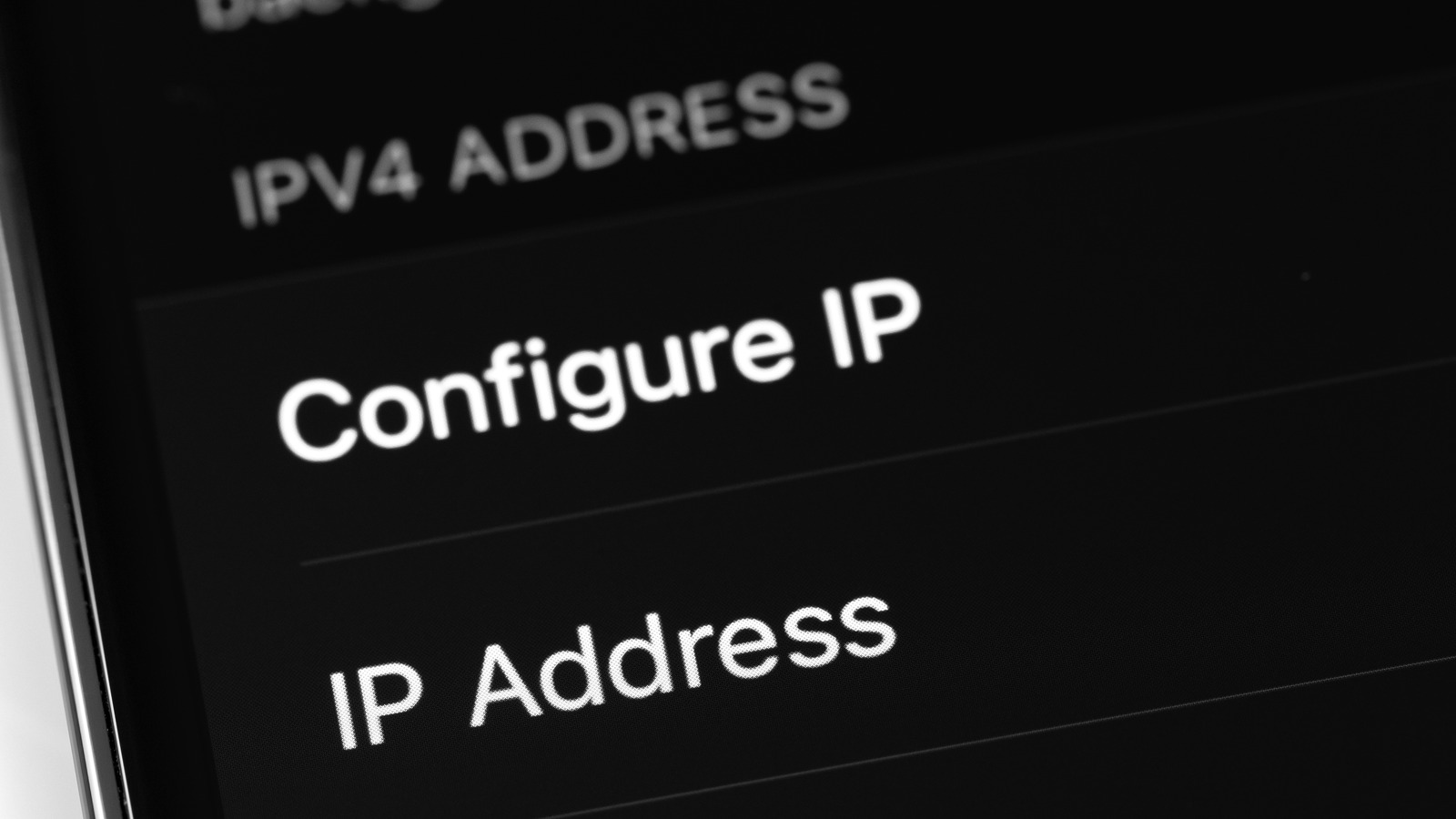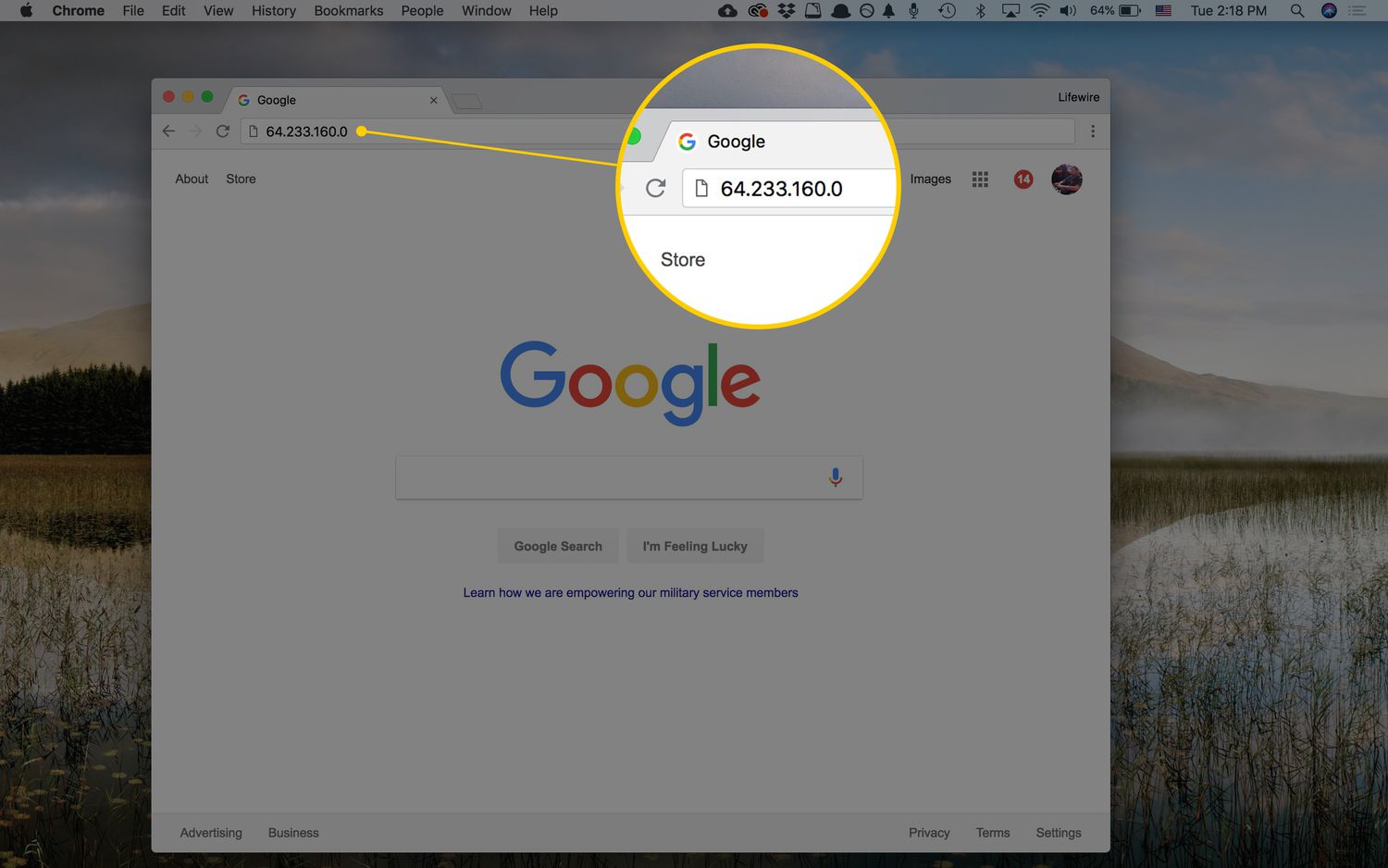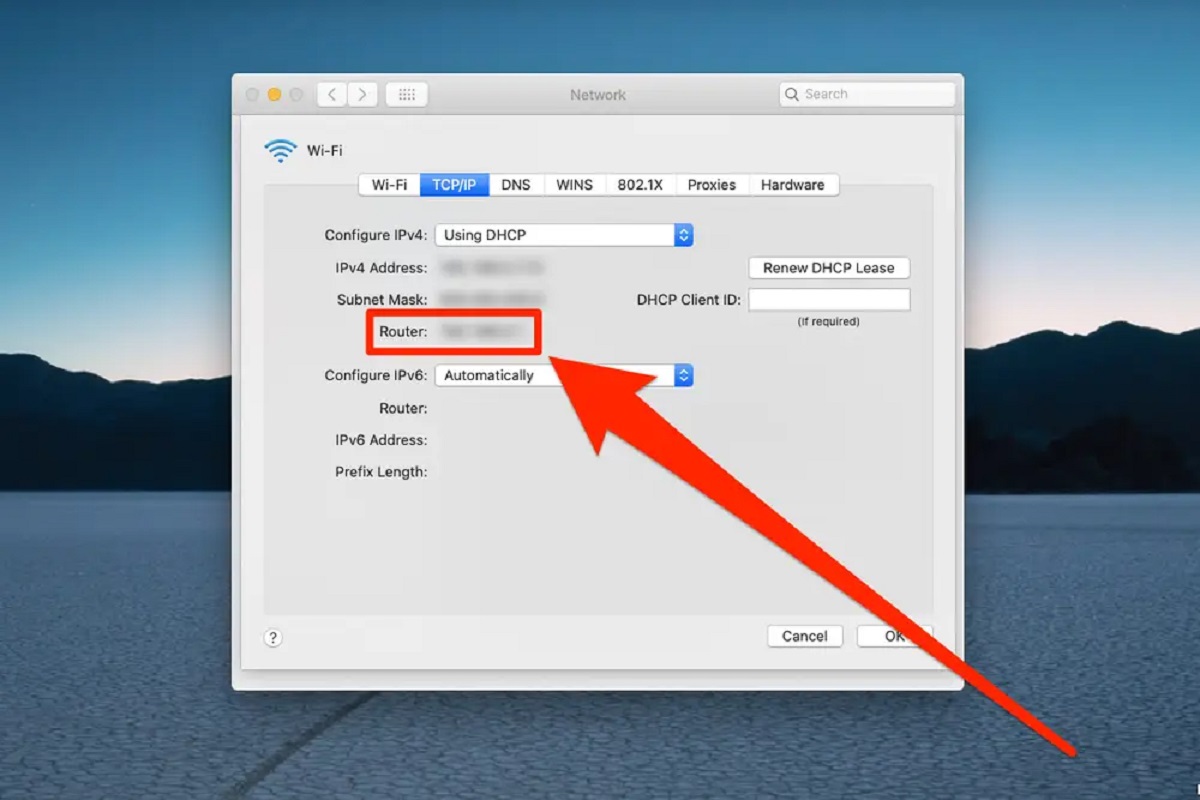Introduction
When browsing the internet, you may have come across the term “IP address”. IP stands for Internet Protocol, and an IP address is a unique identifier assigned to every device connected to a network. These addresses play a crucial role in facilitating communication between devices and ensuring data is delivered to the right destination.
Google, being one of the most popular search engines and internet service providers, also has its own IP address. You might be curious to know what Google’s IP address is and why it is significant.
In this article, we will explore Google’s IP address, its types, and understand why Google uses multiple IP addresses. We will also delve into the benefits of having multiple IP addresses for Google and how they are utilized in its operations. Lastly, we will learn how you can find Google’s IP address.
By the end of this article, you will have a better understanding of the role that IP addresses play in the functioning of Google and how they contribute to its successful operation as a search engine and internet giant.
What is an IP Address?
An IP address, or Internet Protocol address, is a unique numerical label assigned to each device connected to a network. It serves as an identifier, allowing devices to communicate and exchange data with each other over the internet.
There are two types of IP addresses: IPv4 (Internet Protocol version 4) and IPv6 (Internet Protocol version 6). IPv4 addresses consist of a series of four numbers separated by periods, such as 192.168.0.1. Each number can range from 0 to 255, allowing for a total of approximately 4.3 billion unique addresses. On the other hand, IPv6 addresses are represented by eight groups of four hexadecimal digits, separated by colons, providing a virtually unlimited number of addresses.
IP addresses can be static or dynamic. Static IP addresses do not change and are often assigned to devices that require a consistent presence on a network, such as servers. Dynamic IP addresses, on the other hand, are assigned by a server or router and can change over time. These are commonly used for devices connected by home or business internet service providers.
IP addresses serve multiple purposes. Firstly, they enable devices to locate and connect with one another on a network. When you type a web address into your browser, your device uses the IP address of the server hosting that website to establish a connection and retrieve the requested content. Secondly, IP addresses help with network administration, as they allow network administrators to identify and manage devices on a network.
Overall, IP addresses are essential components of the internet infrastructure, ensuring seamless communication between devices and facilitating the flow of data across networks.
What is Google IP Address?
Google, being one of the most widely used search engines and internet service providers, utilizes its own IP address. An IP address assigned to Google allows it to operate its services and deliver search results to users across the world.
Google’s IP address serves as the digital location of its servers and data centers. When you perform a search on Google or access any of its services, your device communicates with Google’s servers through their IP address to retrieve the requested information. This allows for a seamless transfer of data between your device and Google’s network.
Google’s IP address can be thought of as a virtual address for its servers, ensuring that your search queries, emails, or other interactions reach the appropriate destination within Google’s infrastructure.
However, it’s important to note that Google has multiple IP addresses due to various factors, including the scale of its operations, redundancy measures, and the need to distribute user requests efficiently across its network.
These IP addresses can be divided into two main categories: public IP addresses and private IP addresses. Public IP addresses are used by external devices, such as your computer or smartphone, to connect to Google’s services over the internet. Private IP addresses, on the other hand, are assigned to internal devices within Google’s network and are not visible or accessible to the public.
Google’s IP addresses are managed and assigned by Internet Service Providers (ISPs) and can vary depending on your geographic location or the specific Google service you are accessing. By having a distributed network with multiple IP addresses, Google can handle a vast amount of search queries and other user interactions simultaneously, ensuring efficient and reliable performance for its users worldwide.
Throughout its evolution, Google has continually expanded its infrastructure and network capabilities to meet the growing demands of its users. This includes acquiring and utilizing IP addresses to accommodate the massive scale of its operations and deliver a seamless user experience.
Types of Google IP Addresses
Google utilizes a variety of IP addresses to support its extensive network infrastructure and services. These IP addresses can be classified into two main types: public IP addresses and private IP addresses.
Public IP addresses are assigned to Google’s servers and data centers that interact with devices over the internet. These addresses are visible and accessible to external devices and allow users worldwide to access Google’s services, such as search, Gmail, or Google Drive. Public IP addresses play a crucial role in establishing connections between user devices and Google’s servers.
Private IP addresses, on the other hand, are used within Google’s network to facilitate communication between internal devices and services. These addresses are not publicly accessible, making them more secure and suitable for internal operations. Private IP addresses are commonly used for interconnecting servers, routers, and other networking devices within Google’s infrastructure.
Google employs a technique called Network Address Translation (NAT) to map private IP addresses to the public IP address of a device. This allows multiple internal devices to share a single public IP address, optimizing address utilization and improving network efficiency.
Another important type of IP address used by Google is the anycast IP address. Anycast IP addresses are associated with a group of servers located in different geographic locations. When a user sends a request to an anycast IP address, the network routes the request to the nearest server within the group, ensuring faster response times and better performance.
Furthermore, Google also employs IPv6 IP addresses alongside IPv4 addresses. IPv6 addresses are necessary to support the growing number of internet-connected devices and enable seamless communication in the future when IPv4 addresses become scarce.
Overall, the various types of IP addresses utilized by Google help optimize its network connectivity, improve performance, and ensure robust and reliable delivery of its services on a global scale.
Why Does Google Have Multiple IP Addresses?
Google employs multiple IP addresses for several reasons, including network efficiency, redundancy, load balancing, and enhanced security.
One of the main reasons for Google’s use of multiple IP addresses is to improve network efficiency and optimize the distribution of user requests. With millions of users around the world accessing Google’s services simultaneously, having a distributed network with multiple IP addresses helps distribute traffic and prevent bottlenecks. By spreading user requests across different IP addresses and data centers, Google can handle a higher volume of queries and deliver faster responses.
Redundancy is another critical factor in Google’s use of multiple IP addresses. By having redundant IP addresses, Google ensures that if one server or data center becomes unavailable or experiences issues, the traffic can be routed to an alternate IP address, minimizing downtime and maintaining a seamless user experience. This redundancy helps protect against service disruptions and ensures uninterrupted access to Google’s services.
Load balancing is also a key benefit of having multiple IP addresses. Load balancing involves distributing incoming network traffic across multiple servers to optimize resource utilization and improve performance. By using different IP addresses, Google can distribute user requests evenly across its network, preventing any single server from being overwhelmed and ensuring efficient allocation of resources.
Furthermore, multiple IP addresses provide enhanced security for Google’s infrastructure. By having a distributed network with different IP addresses, Google can implement measures to mitigate distributed denial-of-service (DDoS) attacks. DDoS attacks involve overwhelming servers with a flood of traffic, rendering services unavailable. With multiple IP addresses, Google can absorb and mitigate such attacks more effectively by distributing traffic across different IP addresses and implementing security measures at multiple points within its network.
Lastly, by using multiple IP addresses, Google can comply with regional regulations and ensure compliance with data protection laws. Different countries may have specific requirements that Google needs to adhere to, and having distinct IP addresses for each location allows Google to tailor its services and comply with local regulations.
Overall, the use of multiple IP addresses enables Google to optimize network efficiency, improve performance and reliability, provide redundancy, enhance security, and comply with regional requirements. These IP addresses play a crucial role in maintaining the seamless delivery of Google’s services on a global scale.
Benefits of Multiple IP Addresses for Google
Having multiple IP addresses offers several significant benefits for Google, enabling efficient network management, enhanced scalability, improved performance, and increased security.
One of the key advantages of multiple IP addresses is improved network management. With a large number of users accessing Google’s services simultaneously, having multiple IP addresses allows for efficient traffic distribution and load balancing. This helps prevent congestion and ensures that user requests are routed to the most suitable servers and data centers, optimizing resource utilization and improving overall network performance.
Scalability is another crucial benefit enabled by multiple IP addresses. As Google continues to grow and expand its services, the ability to scale its network infrastructure is essential. The use of multiple IP addresses enables Google to effortlessly accommodate increasing user demands by expanding its server capacity and seamlessly distributing traffic across its network. This scalability ensures that Google can handle a massive volume of requests without compromising performance or reliability.
Additionally, multiple IP addresses provide redundancy and fault tolerance for Google’s infrastructure. By employing a distributed network with redundant IP addresses, Google can handle potential failures or disruptions. If one server or data center becomes unavailable, traffic can be automatically redirected to alternate IP addresses, minimizing downtime and preventing service interruptions. This redundancy enhances the reliability and resilience of Google’s services, ensuring uninterrupted access for users.
The use of multiple IP addresses also enhances security for Google. By having a distributed network with different IP addresses, Google can implement robust security measures at different points within its infrastructure. This helps protect against various types of cyber threats, including distributed denial-of-service (DDoS) attacks. The ability to distribute traffic across multiple IP addresses allows Google to absorb and mitigate these attacks effectively, ensuring the continuity and availability of its services.
Furthermore, multiple IP addresses facilitate compliance with regional regulations. Each country may have specific data protection and privacy laws that Google must adhere to. By utilizing distinct IP addresses for different regions, Google can tailor its services to meet local requirements, ensuring compliance and safeguarding user data in each jurisdiction.
Overall, multiple IP addresses provide Google with the flexibility, scalability, and security it needs to manage its vast network infrastructure effectively. They contribute to seamless service delivery, efficient traffic distribution, improved performance, fault tolerance, and compliance with regional regulations.
How Does Google Use IP Addresses?
Google utilizes IP addresses in a variety of ways to enable its services, deliver search results, manage network traffic, and enhance user experience.
First and foremost, Google uses IP addresses to establish connections between user devices and its servers. When you enter a search query or access any of Google’s services, your device communicates with Google’s servers through their respective IP addresses. This process allows for the seamless transfer of data, ensuring that the requested information is delivered to your device.
IP addresses also play a crucial role in managing network traffic and load balancing. Google’s infrastructure, consisting of numerous servers and data centers worldwide, receives an immense volume of user requests. By using IP addresses, Google can distribute this traffic across its network, ensuring efficient allocation of resources and optimizing performance. Load balancing and traffic distribution help prevent congestion and enable smooth functioning even during peak usage periods.
Additionally, Google employs IP geolocation to provide localized services and personalized search results. By analyzing the IP address of a user’s device, Google can determine their approximate geographic location. This information allows Google to tailor search results, display localized content, and provide relevant services based on the user’s region. IP geolocation helps enhance user experience by delivering more relevant and location-specific information.
IP addresses also contribute to the security measures implemented by Google. By monitoring and analyzing incoming traffic patterns and IP addresses, Google can detect potential threats and identify malicious activity, such as DDoS attacks or attempts to access sensitive information. IP addresses help Google implement robust security protocols, ensuring the integrity and protection of its infrastructure and user data.
Moreover, Google uses IP addresses for analytics and troubleshooting purposes. By analyzing IP addresses, Google can gather insights into the usage patterns, demographics, and behavior of its users. This information helps Google refine its services, improve user experience, and optimize its advertising strategies. IP addresses also assist in identifying and resolving any technical issues that may arise within the network, allowing for prompt troubleshooting and minimizing service disruptions.
It is important to note that Google respects user privacy and anonymizes IP addresses by removing the last octet, known as IP masking, after a limited period of time. This further safeguards user data while still allowing Google to perform necessary network operations and provide personalized services.
In summary, Google uses IP addresses to establish connections, manage network traffic, personalize search results, enhance security, analyze user behavior, and troubleshoot technical issues. IP addresses play a vital role in enabling Google’s services and contributing to a seamless user experience.
How to Find Google IP Address
While Google’s IP addresses may not be readily visible to the general public, there are a few ways to find them for specific purposes, such as troubleshooting network connectivity or configuring firewall settings. Here are a few methods to discover Google’s IP addresses:
1. Command Prompt or Terminal:
You can use the Command Prompt (Windows) or Terminal (Mac/Linux) to ping Google’s domain name and retrieve its IP address. Open the Command Prompt or Terminal and enter the following command: ping google.com. The system will then display the IP address associated with the domain name.
2. Network Tools:
There are various network tool websites and applications that can provide information about domain names and their corresponding IP addresses. Simply enter “Google.com” or “www.google.com” into these tools, and they will display the IP address associated with Google.
3. Using Online IP Lookup Services:
Several websites offer IP lookup services that allow you to find IP addresses associated with a particular domain. These tools typically require you to enter the domain name, such as “google.com,” and they will return the corresponding IP address.
4. DNS Lookup:
You can perform a DNS (Domain Name System) lookup to find Google’s IP address. DNS translates domain names into IP addresses. There are online DNS lookup tools available where you can enter “google.com” and retrieve the associated IP address.
It is important to note that Google has a distributed network with multiple IP addresses. The IP address you find may not represent all of Google’s servers or data centers. Google may also change its IP addresses from time to time, so the information you obtain may not remain accurate indefinitely.
Overall, finding Google’s IP address requires using tools like Command Prompt, network tools, IP lookup services, or performing a DNS lookup. Keep in mind that the IP address you find may not represent the entirety of Google’s network, and it is subject to change.
Conclusion
IP addresses play a crucial role in the functioning of Google as a search engine and internet service provider. Google utilizes multiple IP addresses to ensure efficient network management, enhance scalability, improve performance, and strengthen security measures. By having a distributed network with both public and private IP addresses, Google can handle the massive volume of user requests, distribute traffic effectively, and maintain uninterrupted service delivery.
Furthermore, multiple IP addresses facilitate load balancing, fault tolerance, and redundancy within Google’s infrastructure. It enables efficient resource allocation and ensures that user requests are routed to the most suitable servers and data centers, optimizing performance and enhancing user experience.
Google’s use of IP addresses goes beyond simply establishing connections between user devices and its servers. IP geolocation allows Google to personalize search results and deliver localized content based on the user’s geographical location. The analysis of IP addresses also enables Google to enhance security measures, monitor network traffic, and identify and mitigate potential threats.
While the specific IP addresses associated with Google’s servers may not be readily visible to the public, various methods, such as using network tools or performing DNS lookups, can help identify them for specific purposes such as troubleshooting network connectivity or configuring firewall settings.
In conclusion, IP addresses are vital to Google’s operations, providing the infrastructure necessary for its services to function seamlessly. Multiple IP addresses enable efficient network management, scalability, load balancing, security, and personalized experiences for users around the world. As Google continues to evolve and expand its services, its use of IP addresses will remain integral in delivering reliable, secure, and user-centric internet experiences.

























